Cognitive Straightening 2: Learning Illusions and Distortions

( c )
For hundreds of years, researchers have been discussing what unknown processes in the eyes, brain, or outside the human body cause illusions. Since it is very difficult to measure such physiological reactions, until recently it was impossible to thoroughly study the correlations between illusions and their physiological predecessors.
In recent years, thanks to technological progress, we have made significant advances in research, and even revealed several neural mechanisms for the formation of optical illusions (for more details, see the first part ). There are still more discoveries ahead of which we will see today - for some visual illusions, a confirmed and correctly described scientific explanation has not yet been proposed.
Moron-Bur-Ross Illusion and Variations
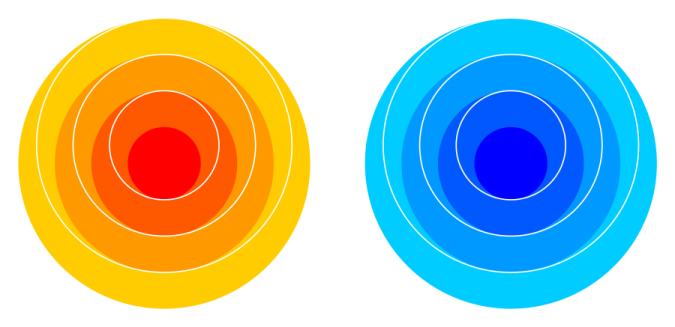
( c )
Each ring is uniform in color, but the inner region, separated by a thin white circle, looks lighter than the outer.
This illusion has many variations.
Take a look at the picture below. It will seem to you that in each rectangle the right part falling into the region of the triangle is darker than the left, although in fact the brightness is the same.

( c )
Michel Eugene Chevreul back in 1839 showed that the same color will be perceived brighter against a dark background, and darker against a light background, since the color gives an adjacent color an additional shade.
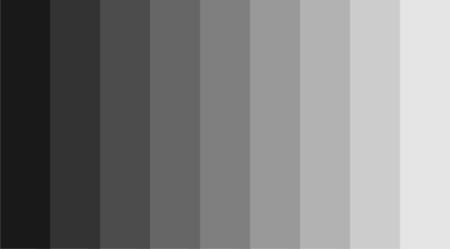
( c )
Each rectangle shown in the figure above is uniform in brightness, but it seems to the observer that near the border the brightness is different.
According to one hypothesis, the responsibility for these types of illusions lies with the local energy model for detecting signs (Morrone & Burr, 1988), which is based on the assumption that for the human brain, the weight of the points located at the border of the regions should have greater values compared to the weight internal points. The value of the average image brightness is not significant.
Another hypothesis says that the illusion is based on an independent transient two-phase processing of light increase and decrease signals, similar to those that are believed to occur inside a magnocellular path that records the movement of objects, perceives spatial depth and determines spatial relationships between objects (Burr & Morrone , 1993; Marrocco, 1976; Saito & Fukada, 1986; Swanson, Ueno, Smith, 1987).
The illusion of depth perception

( c )
The illusion of depth perception is an inadequate reflection of the perceived object and its properties. In this example, due to the correct arrangement of the shadows, it seems that the figure goes deep.
One way to perceive depth in the world around us is to use the so-called monocular signals. If you close one eye, it will be harder for you to assess the depth, but still you can determine how close or far objects are located depending on your position.
The absolute or actual size of the object also contributes to the perception of depth. A smaller object, not even knowing its exact size, will appear to be located farther than a larger object placed in the same place.
Our acquaintance with the object affects the perception of size and distance. So, understanding the typical dimensions of the car you drive helps you determine how close or far other vehicles are.

Perspective is an illusion in which two parallel roads converge at a certain distance at one point. ( c )
Some illusions have become so part of our lives that we take them for granted. For example, it seems that the road shown in the photo narrows as it moves away from the observation point, and small objects are perceived more distant than large ones. But this rule also works in the opposite direction: without knowing the size of the objects, you can see one as smaller, since it is further away.
Autokinetic illusion
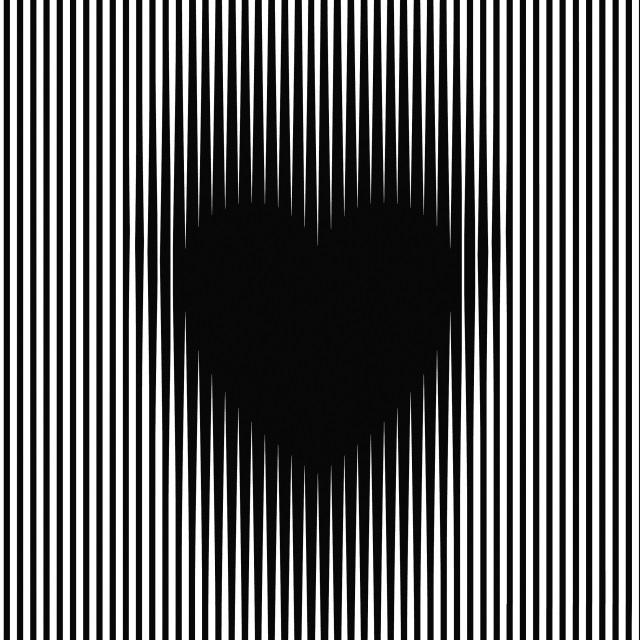
( c )
The illusion of movement, made in the form of a beating heart (or other dark figure).
The black heart “moves” due to the external environment, which looks like a blurred halo. The effect occurs when the brain “compares” the central image with a striped background.
Color can also enhance the effect of movement.
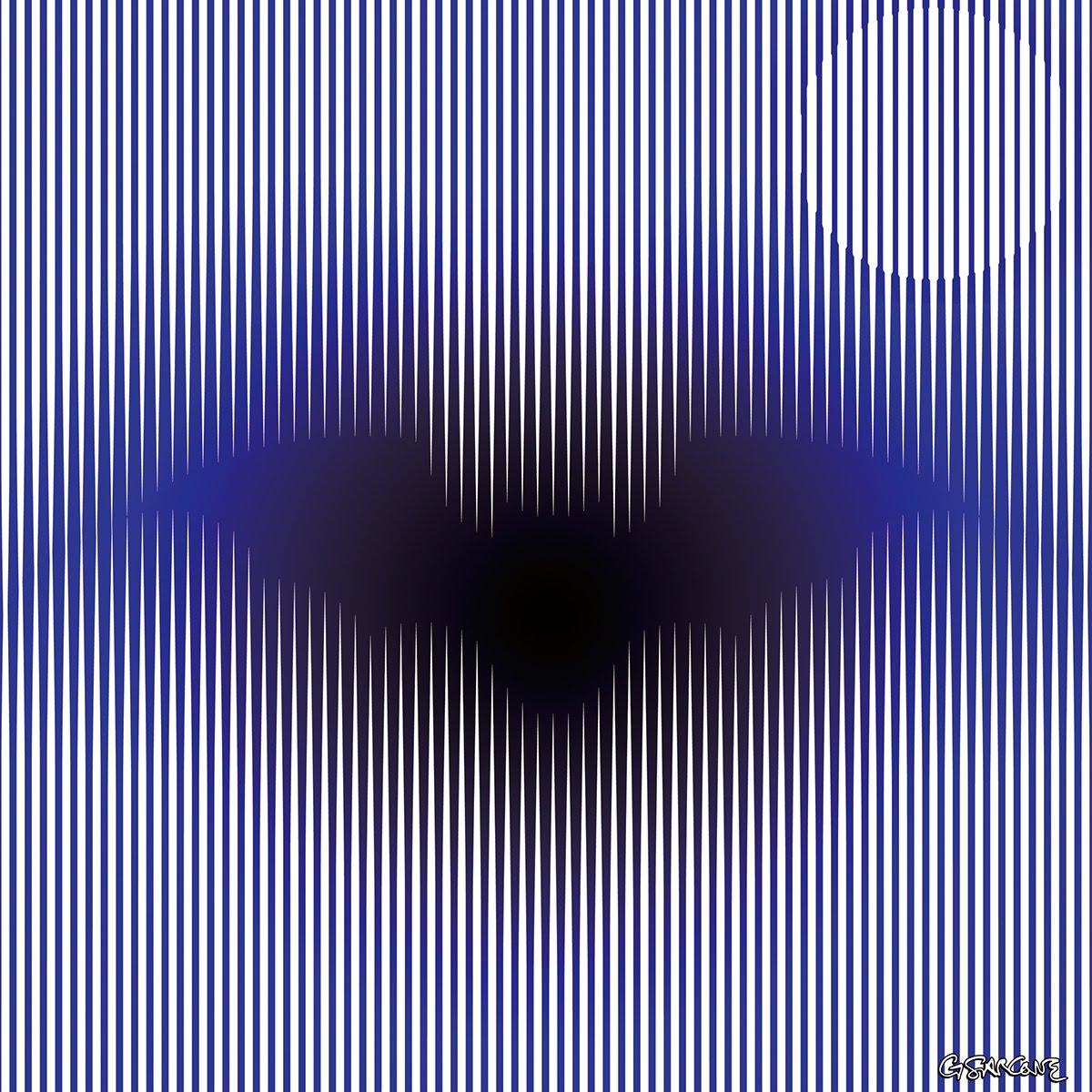
( c )
But sometimes an interesting thing happens to illusions. Check:

( c )
If a person is not previously informed that the patterns on the illusions above should rotate, he may not notice the cognitive effect. A number of similar illusions are based on the scientific study "Visual dissociations of movement, position, and stereo depth: Some phenomenal phenomena", made in 1983.
The illusion effect is based on a thin “highlight” of one of the faces of the square and “shading” of the other with the help of light and dark stripes, which create, respectively, a sense of movement of the square against a dynamic background. The same thing happens if you put real figures with “highlighted” and “shaded” edges on a dynamic screen.
An accurate neurobiological explanation of the illusions of movement does not yet exist.
Moon illusion

( c )
This illusion is easily mistaken for the machinations of mysterious atmospheric phenomena: the full moon, located just above the horizon, looks much larger than when it is above your head. The reasons for this illusion are still being discussed. One explanation is based on the perception of foreground objects, due to which the moon above the horizon seems to be a distant object. As we have already found out, distant means small.
The moon, located just above the horizon, will not seem so large if you look at it through a sheet of paper in which a hole is made so that only the moon, and not the horizon, is visible through it. If you look with two eyes, then both eyes will see the moon of different sizes!
However, there is an interesting alternative version, which is built around the effects of the illusions of Mario Ponzo and Hermann Ebbinghaus.

( c )
Italian psychologist Mario Ponzo was able to “outwit” the illusion of depth perception with the help of decreasing distance between intermediate horizontal segments and a monotonous background. As a result, the upper segment crossing the converging lines seems larger.

( c )
The illusion of Hermann Ebbinghaus is also related to the perception of size: if the surrounding circles are close to the central circle, it seems larger, and vice versa, if they are at a great distance, the central circle looks smaller.

( c )
So, the effects of the mystery moon can arise due to the one-color sky, which our brain perceives as being directly above the head - further from the horizon and closer to the zenith.
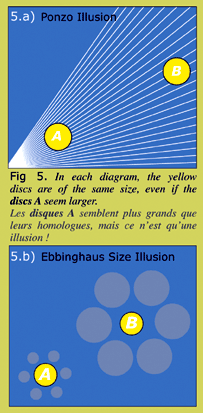
( c )
When the moon is on the horizon, the brain interprets it as a more distant object, and at the same time believes that it should be physically larger, consistent with the observations of Ebbinghaus and Ponzo.
Conclusion
While experiencing a visual illusion, we can see that which is not there, or not see what is actually there, or even see something different from what is in reality. Because of this disconnectedness between perception and reality, illusions demonstrate ways of processing the information of the physical world by the human brain.
Illusions are often seen as a defect in intelligent systems and a dangerous brain restriction, however, in fact, they help to create a tool to expand the capabilities of consciousness and the subconscious. By exploring the imperfections of the brain, we can learn more about the computational methods that the brain uses to form a sense of reality.
All Articles